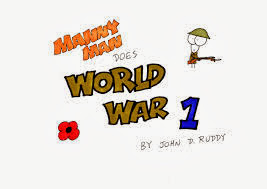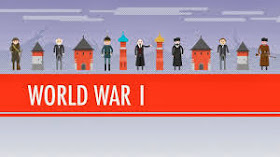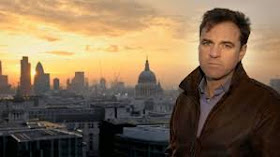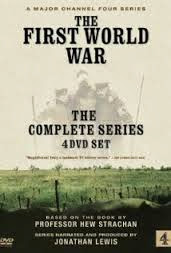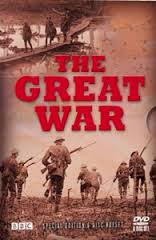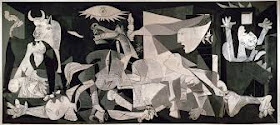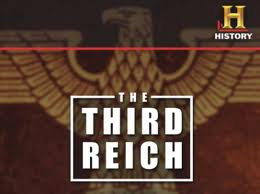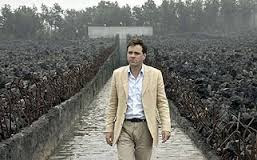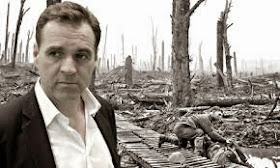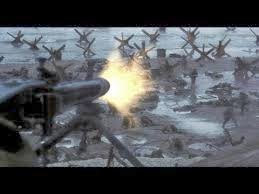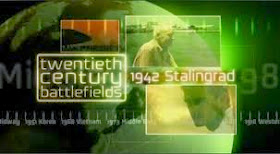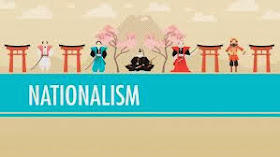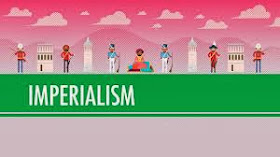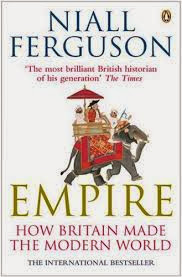Agenda:
Chapter 19
• To make students aware of the refocusing of racism in the nineteenth-century West
• To examine the effects of Western dominance on the empires of Asia
• To explore the reasons behind the collapse of the Chinese and Ottoman empires
• To investigate the reasons for Japan’s rise to its position as an industrial superpower and to compare Japan’s experience with that of China
Chapter 20
• To examine the ways in which Europeans created their nineteenth-century empires
• To consider the nineteenth-century development of racism as an outcrop of European feelings of superiority and to investigate the ways in which subject peoples were themselves affected by European racial categorization
• To consider the extent to which the colonial experience transformed the lives of Asians and Africans
• To define some of the distinctive qualities of modern European empires in relationship to earlier examples of empire
 Chapter 19
Chapter 19
World History AP- Learning Targets
Unit 5: THE EUROPEAN MOMENT IN WORLD HISTORY 1750-1914
CHAPTER 19 Internal Troubles, External Threats: China, the Ottoman Empire, & Japan 1800–1914
Learning Targets:
- Analyze the development of the refocused racism in the nineteenth-century West
- Examine the effects of Western dominance on the empires of Asia
- Explain the reasons behind the collapse of the Chinese and Ottoman empires
- Describe the reasons for Japan’s rise to its position as an industrial superpower and compare Japan’s experience with that of China
BIG PICTURE QUESTIONS:
1. How did European expansion in the nineteenth century differ from that of the early modern era (see Chapters 14–16)?
2. What differences can you identify in how China, the Ottoman Empire, and Japan experienced Western imperialism and confronted it? How might you account for those differences?
3. “The response of each society to European imperialism grew out of its larger historical development and its internal problems.” What evidence might support this statement?
4. What kind of debates, controversies, and conflicts were generated by European intrusion within each of the societies examined in this chapter?
Margin Review Questions:
1. In what ways did the Industrial Revolution shape the character of nineteenth-century European imperialism?
2. What contributed to changing European views of Asians and Africans in the nineteenth century?
3. What accounts for the massive peasant rebellions of nineteenth-century China?
4. How did Western pressures stimulate change in China during the nineteenth century?
5. What strategies did China adopt to confront its various problems? In what ways did these strategies reflect China’s own history and culture as well as the new global order?
6. What lay behind the decline of the Ottoman Empire in the nineteenth century?
7. In what different ways did the Ottoman state respond to its various problems?
8. In what different ways did various groups define the Ottoman Empire during the nineteenth century?
9. Compare Japan’s historical development from that of China and the Ottoman Empire during the 19th century?
10. In what ways was Japan changing during the Tokugawa era?
11. In what respects was Japan’s 19th century transformation revolutionary?
12. How did Japan’s relationship to the larger world change during its modernization process?
KEY TERMS:
Abd al-Hamid II: Ottoman sultan (r. 1876–1909) who accepted a reform constitution but then quickly suppressed it, ruling as a reactionary autocrat for the rest of his long reign. (pron. AHB-dahlhahm- EED)
Boxer Rebellion: Rising of Chinese militia organizations in 1900 in which large numbers of Europeans and Chinese Christians were killed.
China, 1911: The collapse of China’s imperial order, officially at the hands of organized revolutionaries but for the most part under the weight of the troubles that had overwhelmed the government for the previous half-century.
daimyo: Feudal lords of Japan who retained substantial autonomy under the Tokugawa shogunate and only lost their social preeminence in the Meiji restoration. (pron. DIME-yoh)
Hong Xiuquan: Chinese religious leader (1814–1864) who sparked the Taiping Uprising and won millions to his unique form of Christianity, according to which he himself was the younger brother of Jesus, sent to establish a “heavenly kingdom of great peace” on earth. (pron. hong shee-OH-chew-an)
informal empire: Term commonly used to describe areas that were dominated by Western powers in the nineteenth century but that retained their own governments and a measure of independence, e.g., Latin America and China.
Meiji restoration: The overthrow of the Tokugawa shogunate of Japan in 1868, restoring power at long last to the emperor Meiji. (pron. MAY-gee)
Perry, Matthew: U.S. navy commodore who in 1853 presented the ultimatum that led Japan to open itself to more normal relations with the outside world.
Opium Wars: Two wars fought between Western powers and China (1839–1842 and 1856–1858) after China tried to restrict the importation of foreign goods, especially opium; China lost both wars and was forced to make major concessions.
Russo-Japanese War, 1904–1905: Ending in a Japanese victory, this war established Japan as a formidable military competitor in East Asia and precipitated the Russian Revolution of 1905.
samurai: Armed retainers of the Japanese feudal lords, famed for their martial skills and loyalty; in the Tokugawa shogunate, the samurai gradually became an administrative elite, but they did not lose their special privileges until the Meiji restoration. (pron. SAH-moo-rie)
self-strengthening movement: China’s program of internal reform in the 1860s and 1870s, based on vigorous application of Confucian principles and limited borrowing from the West.
Selim III: Ottoman sultan (r. 1789–1807) who attempted significant reforms of his empire, including the implementation of new military and administrative structures. (pron. seh-LEEM)
“sick man of Europe, the”: Western Europe’s unkind nickname for the Ottoman Empire in the nineteenth and early twentieth centuries, a name based on the sultans’ inability to prevent Western takeover of many regions and to deal with internal problems; it fails to recognize serious reform efforts in the Ottoman state during this period.
Social Darwinism: An application of the concept of “survival of the fittest” to human history in the nineteenth century.
Taiping Uprising: Massive Chinese rebellion that devastated much of the country between 1850 and 1864; it was based on the millenarian teachings of Hong Xiuquan. (pron. tie-PING)
Tanzimat reforms: Important reform measures undertaken in the Ottoman Empire beginning in 1839; the term “Tanzimat” means “reorgani-zation.” (pron. TAHNZ-ee-MAT)
Tokugawa shogunate: Rulers of Japan from 1600 to 1868. (pron. toe-koo-GAH-wah SHOW-gun-at)
unequal treaties: Series of nineteenth-century treaties in which China made major concessions to Western powers.
Young Ottomans: Group of would-be reformers in the mid-nineteenth-century Ottoman Empire that included lower-level officials, military officers, and writers; they urged the extension of Westernizing reforms to the political system.
Young Turks: Movement of Turkish military and civilian elites that developed ca. 1900, eventually bringing down the Ottoman Empire.
Chapter 20
World History AP- Learning Targets
Unit 5: THE EUROPEAN MOMENT IN WORLD HISTORY 1750-1914
CHAPTER 20 Colonial Encounters 1750–1914
Learning Targets:
Examine the ways in which Europeans created their nineteenth-century empires
Analyze the nineteenth-century development of racism as an outcrop of European feelings of superiority and investigate the ways in which subject peoples were themselves affected by European racial categorization
Trace the development and impact of the colonial experience & how it transformed the lives of Asians and Africans
Explain the distinctive qualities of modern European empires in relationship to earlier examples of empire
BIG PICTURE QUESTIONS:
1. Why were Asian and African societies incorporated into European colonial empires later than those of the Americas? How would you compare their colonial experiences?
2. In what ways did colonial rule rest upon violence and coercion, and in what ways did it elicit voluntary cooperation or generate benefits for some people?
3. In what respects were colonized people more than victims of colonial conquest and rule? To what extent could they act in their own interests within the colonial situation?
4. Was colonial rule a transforming, even a revolutionary, experience, or did it serve to freeze or preserve existing social and economic patterns? What evidence can you find to support both sides of this argument?
Margin Review Questions:
1. In what different ways did the colonial takeover of Asia and Africa occur?
2. Why might subject people choose to cooperate with the colonial regime? What might prompt them to rebel or resist?
3. What was distinctive about European colonial empires of the nineteenth century?
4. How did the power of colonial states transform the economic lives of colonial subjects?
5. How did cash-crop agriculture transform the lives of colonized peoples?
6. What kinds of wage labor were available in the colonies? Why might people take part in it? How did doing so change their lives?
7. How were the lives of African women altered by colonial economies?
8. Did colonial rule bring “economic progress” in its wake?
9. What impact did Western education have on colonial societies?
10. What were the attractions of Christianity within some colonial societies?
11. How and why did Hinduism emerge as a distinct religious tradition during the colonial era in India?
12. In what way were “race” and “tribe” new identities in colonial Africa?
KEY TERMS:
Africanization of Christianity: Process that occurred in non-Muslim Africa, where millions who were converted to Christianity sought to maintain older traditions alongside new Christian ideas; many converts continued using protective charms and medicines and consulting local medicine men, and many continued to believe in their old gods and spirits.
apartheid: Afrikaans term literally meaning “aparthood”; the system that developed in South Africa of strictly limiting the social and political integration of whites and blacks. (pron. uh-PART-hite)
Blyden, Edward: Prominent West African scholar and political leader (1832–1912) who argued that each civilization, including that of Africa, has its own unique contribution to make to the world.
cash-crop agriculture: Agricultural production, often on a large scale, of crops for sale in the market, rather than for consumption by the farmers themselves.
colonial racism: A pattern of European racism in their Asian and African colonies that created a great racial divide between Europeans and the natives, and limited native access to education and the civil service, based especially on pseudo-scientific notions of naturally superior and inferior races.
colonial tribalism: A European tendency, especially in African colonies, to identify and sometimes invent distinct “tribes” that had often not existed before, reinforcing European notions that African societies were primitive.
Congo Free State/Leopold II: Leopold II was king of Belgium from 1865 to 1909; his rule as private owner of the Congo Free State during much of that time is typically held up as the worst abuse of Europe’s second wave of colonization, resulting as it did in millions of deaths.
cultivation system: System of forced labor used in the Netherlands East Indies in the nineteenth century; peasants were required to cultivate at least 20 percent of their land in cash crops, such as sugar or coffee, for sale at low and fixed prices to government contractors, who then earned enormous profits from further sale of the crops.
Indian Rebellion, 1857–1858: Massive uprising of much of India against British rule; also called the Indian Mutiny or the Sepoy Mutiny from the fact that the rebellion first broke out among Indian troops in British employ.
informal empires: Term commonly used to describe areas such as Latin America and China that were dominated by Western powers in the nineteenth century but that retained their own governments and a measure of independence.
invention of tradition: In many colonial states, a process of forging new ways of belonging and self-identification that defined and to some extent mythologized the region’s past, especially to create broader terms of belonging than had existed before.
scramble for Africa: Name used for the process of the European countries’ partition of the continent of Africa between themselves in the period 1875–1900.
Vivekananda, Swami: Leading religious figure of nineteenth-century India (1863–1902); advocate of a revived Hinduism and its mission to reach out to the spiritually impoverished West. (pron. vee-vikah-NAHN-dah)
Western-educated elite: The main beneficiaries in Asian and African lands colonized by Western powers; schooled in the imperial power’s language and practices, they moved into their country’s professional classes but ultimately led anticolonial movements as they grew discouraged by their inability to win equal status to the colonizers.
Crash Course Nationalism, Samurai, Daimyo and Matthew Perry
Crash Course: Nineteenth Century Imperialism
Andrew Marr
Niall Ferguson's: How Britain Made the Modern World
What do you believe
Niall Ferguson's "Thesis" is?
Do you agree?
How did Europeans justify the paradox that they valued national independence & Enlightenment values such as freedom & equality, yet denied these things to the people they colonized?
1. What are Livingston's 3 C's?
2. What role does religion play in the Imperial Movement?
3. How did British feelings about slavery change?
